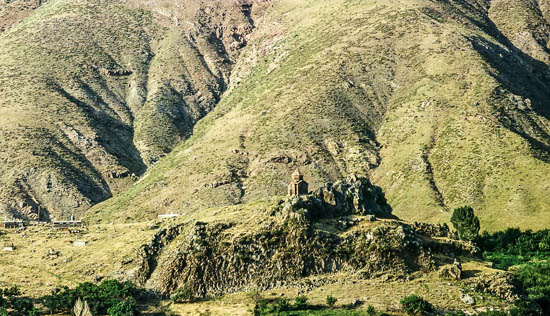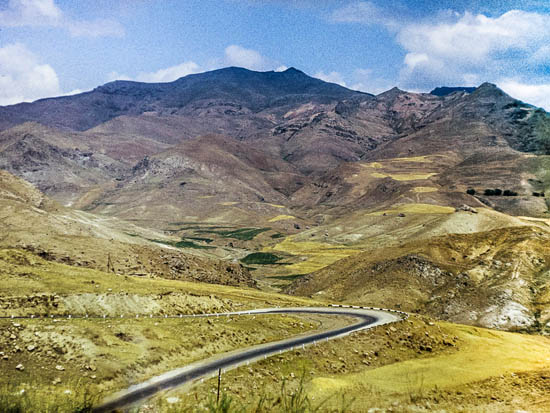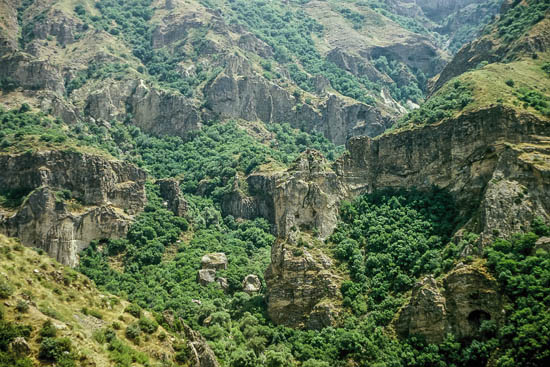In a 2013 post (Armenia – stops, movement, colors), Catherine painted a rather depressing picture of the current state of affairs in Armenia. Above all, of the “cities of the valleys”, sacrificed to 19th-century industrialization, and definitively marginalized by Communism and Stalinism of the 20th century. She contrasts them with the “hills overlooking the valleys”, where villages and churches lived back then, and “opened doors to the passer-by, the traveler, the wanderer.”
And, in spite of this, to have a positive final word, she closes her post with the photo (from around 1910) of a young Armenian woman in festive dress, standing in fresh springtime surroundings, with this phrase: ”Spring will certainly come soon.”
I cannot argue with her.
Either with the diagnosis, or with the fact that there is always hope.
I am grateful to fate, that in 1977 I could spend a long month in Armenia. The occasion was offered by a youth exchange camp, common among the countries of the Socialist block. By now I have managed to digitize most of the three hundred color slides taken then, and it is with great pleasure that I entrust to the host of this blog the composition of them into a photo post.
I feel like my photos, taken 38 years ago, support Catherine’s article. The vast majority of them represent the monasteries standing for centuries, or more than a thousand of years in the highlands, the incredibly elaborate cross-stones, and the beautiful Armenian scenery. And it’s no accident that almost no city (no modern city) pops up among them. If it does, it is rather for the sake of contrast (a deterrent example).
None of us had any plan for what to see in this country. At that time, you know, there was no internet, no Lonely Planet. To tell the truth, we should have not even expected to travel. We were young, we had almost no money, and in terms of the Soviet laws of those times we should have not even go into the countryside without a special permit. It turned out that there, hitchhiking worked very well, and that there was virtually no control. From Sevan (our town) and Yerevan we could reach any point of the country, and even Tbilisi, in Georgia!
Regarding the targets, we relied – apart of our instincts and, of course, good luck – on the postcards bought there, in which fantastic historic churches lured us on to more and more adventures. Over time, a poster entitled “Illustrated Guide-Map of Historical Architectural Monuments of Soviet Armenia”, became our Bible, which roughly showed the approximate location of the most important monuments.
As for the photos, I only had a 50 mm kit lense to my Practica Super TL, and the raw material was limited to 7 or 8 rolls of Orwo (East Germany) slide film.
Many photos would of course require a story, but now let the pictures speak for themselves.
Gábor
Hasmik Harutyunyan: Nazani. From the album Armenia Anthology.




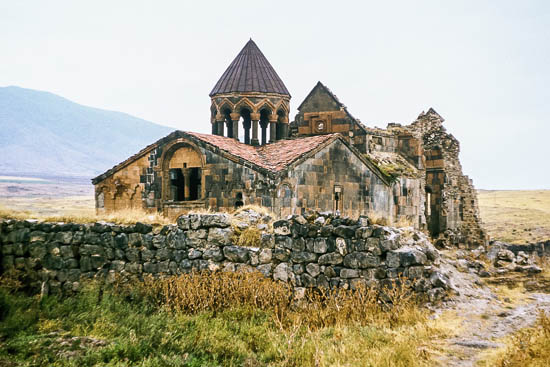 Hovhannavank (see also here and here)
Hovhannavank (see also here and here)

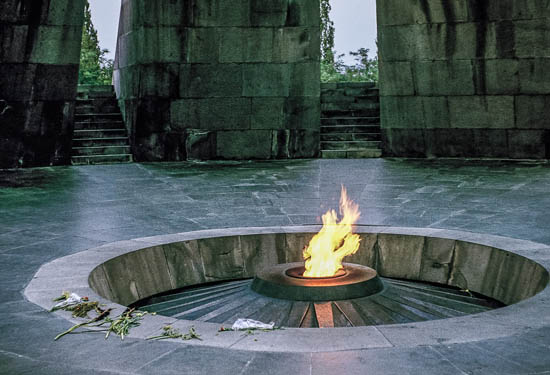 Yerevan, Genocide Memorial
Yerevan, Genocide Memorial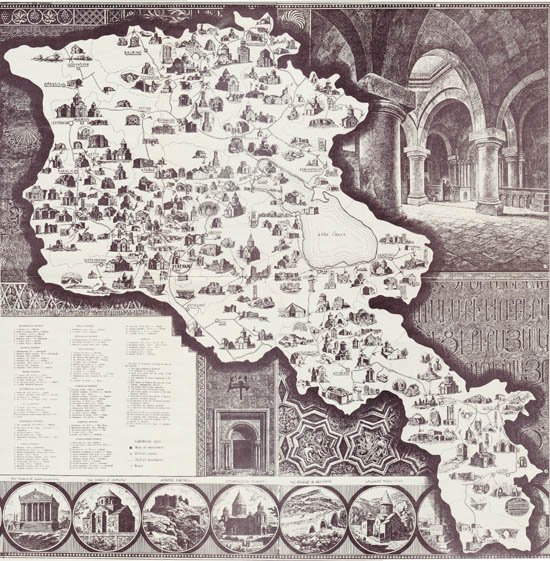 Map of Armenian monasteries with Armenian and English text
Map of Armenian monasteries with Armenian and English text 
Below: The photographed monasteries on the modern map



